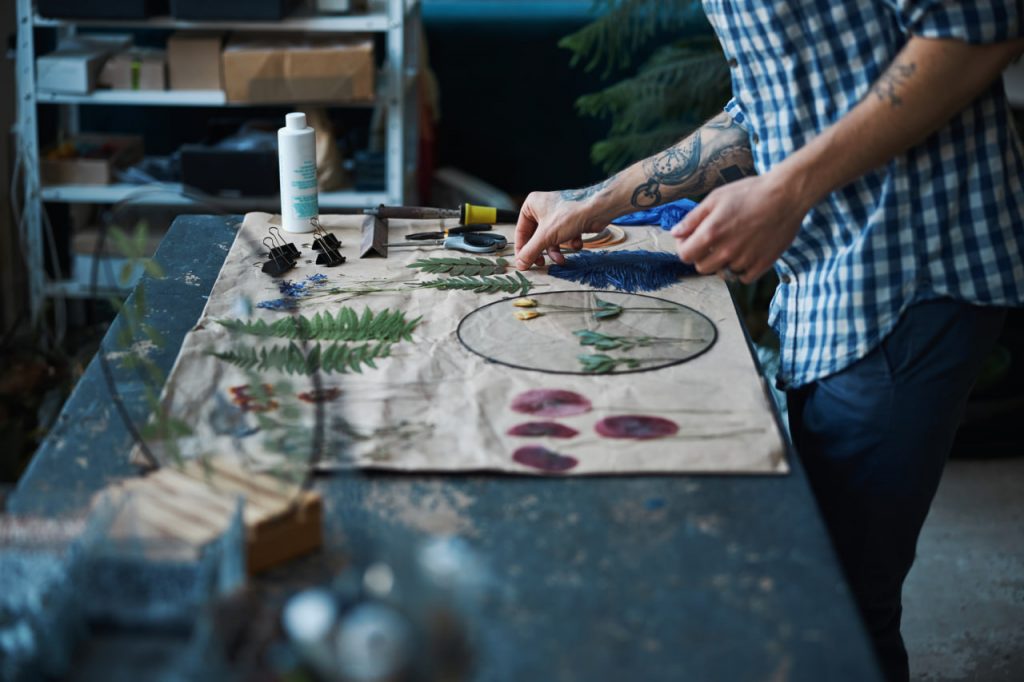As a professional illustrator, I’m always seeking ways to grow and push the boundaries of my craft. I’ve worked on a variety of projects, from children’s books to editorial illustrations, but there was one area that I felt was missing from my portfolio: botanical illustration. It’s not that I wasn’t passionate about nature—I loved it. But capturing the true beauty and intricacy of plants was something I had never fully explored. That changed when I took the leap into botanical illustration, and it’s been a game-changer for both my art and my career.
Here’s how botanical art helped me elevate my professional work, enhance my skills, and open up new opportunities as an illustrator.
Discovering the Precision of Botanical Illustration
One of the first things I learned when diving into botanical illustration was the precision and attention to detail required. Unlike other forms of illustration I’d worked on, botanical art involves capturing every small detail—the veins on leaves, the texture of petals, the subtle gradation of color in a flower. I quickly realized that botanical illustration wasn’t just about drawing plants; it was about understanding them in a scientific and artistic sense.
The course I enrolled in provided me with structured lessons on how to draw plants accurately while still allowing room for creative expression. It taught me to pay attention to the smallest details, which I had never considered before. This focus on accuracy has not only improved my botanical illustrations but also enhanced the overall quality of my professional artwork.
Bringing New Dimensions to My Style
I’ve always considered my artistic style to be vibrant and expressive, but I found that botanical art allowed me to experiment with a new level of refinement. Drawing plants requires a balance between technical skill and creativity, and it’s this combination that I was eager to incorporate into my professional projects.
Incorporating botanical elements into my illustrations has allowed me to elevate my work, giving it a new dimension. The delicate lines and soft colors of botanical drawings have added a layer of depth to my other projects, whether they’re more abstract or more detailed. Botanical illustrations require a softer approach, and this subtlety has infused my broader body of work with a new sensibility.
For example, when I started adding botanical motifs to my book illustrations, I noticed that the natural elements added an emotional richness. The plants weren’t just decorative—they brought the illustrations to life. They had a story to tell, and they deepened the narrative. That’s something I hadn’t realized before: botanical elements are not just visually appealing, but they can add significant emotional and symbolic value to the work.
Incorporating Nature into Editorial and Commercial Work
One of the most exciting things about adding botanical illustration to my skill set has been the opportunity to apply it to commercial and editorial work. Botanical illustrations are in demand in various industries, from packaging design to magazine illustrations, and having this skill has opened up new professional opportunities for me.
For example, I was recently approached by a design studio to create a series of botanical illustrations for a sustainable brand. The client wanted botanical motifs that were not only beautiful but also conveyed the brand’s commitment to nature. It was an amazing experience, and the feedback I received from the client was overwhelmingly positive. My botanical work helped elevate the entire design, and it felt rewarding to see how my new skills had real-world impact.
Botanical illustration has added a fresh element to my portfolio, making my work more marketable and expanding the types of projects I can take on. It’s an area of expertise that not only sets me apart from other illustrators but also aligns with my passion for nature and sustainability.
Gaining Confidence and Credibility
When I first started botanical illustration, I was nervous about how my style would translate into this more technical and structured art form. I had no formal training in botanical drawing, and I wasn’t sure if I could pull it off. But the process of learning and receiving personalized feedback from expert instructors gave me the confidence to keep improving.
As I honed my skills, I started incorporating botanical elements into my professional projects more boldly. Each completed illustration added to my confidence, and my clients began to notice the difference in my work. They could see the level of care, precision, and attention to detail that came with botanical art, and that helped boost my credibility as a serious illustrator.
The feedback I received from fellow artists and clients has been invaluable. Many clients have told me that my botanical illustrations stand out in a way that elevates their entire brand or project. It’s not just about the technique—it’s about how the art connects with the audience. Clients now come to me specifically for my botanical style, which has expanded the type of work I’m sought after for.
A Gateway to New Creative Pathways
Incorporating botanical art into my practice has opened up new creative pathways I never anticipated. It’s inspired me to experiment with new mediums, from watercolors to colored pencils, and it has pushed me to try different approaches to my existing projects. I’ve also started exploring other forms of natural illustration, like wildlife art and landscape drawing, which has broadened my artistic horizons even further.
What’s been most exciting is how botanical art has helped me see new potential in my professional work. What I once considered a niche interest has now become a central part of my creative journey. Botanical illustration has not only enhanced the work I already do but has inspired me to take my art in new and exciting directions.
The Takeaway: How Botanical Art Can Elevate Your Career
If you’re a professional artist or illustrator looking to take your work to the next level, I can’t recommend botanical illustration enough. The precision, creativity, and technical skills involved in botanical art have helped me refine my craft and distinguish myself in a competitive industry. The ability to capture the beauty of plants in both realistic and artistic ways has expanded my portfolio, opened doors to new opportunities, and given me the confidence to tackle projects that push my artistic boundaries.
Incorporating botanical art into my work has truly elevated my career. It’s brought a new sense of purpose and excitement to my craft, and I’m more motivated than ever to continue exploring this art form. Whether you’re looking to diversify your portfolio or simply improve your artistic skills, botanical illustration offers a fresh, rewarding path to artistic growth.

